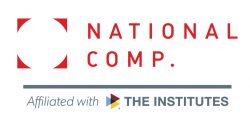Opioids in Context: Weighing the Effectiveness of Alternative Approaches to Pain Management

There’s no question that the over-prescription of opioids for pain management has had devastating consequences on patients, families and the medical community at large.
“We have a pain problem in this nation,” said Dr. Nikki Wilson, senior director of clinical pharmacy services, pharmacy solutions at Mitchell, “which led to the opioid epidemic and a number of things.” An average of 100,000 people continue to die as a result of drug-involved overdose every year, according to the National Center for Health Statistics.
Although the workers’ compensation industry has made strides in reducing the number of scripts for opioids issued each year, the most effective path to pain relief and management remains fraught with obstacles for many people who experience an injury on the job.
Opioids still serve a function in many injury and surgical recovery cases, yet they need not be the default pain management treatment that medical teams use and insurers approve.
For Wilson, the key question is “How do we impact this pain concern without diving into some of these strategies that have proven to be problematic in the past?”
Wilson will join a panel of fellow pain management experts for an in-depth discussion entitled “Pain Management That’s Easier to Swallow: Non-Pharmacological Alternatives” on Oct. 19 at National Comp 2022 in Las Vegas.
The conversation will center around an examination of the relative impacts of opioids versus non-pharmacological therapies that have proven to be effective in helping patients manage chronic pain.
Treating the Whole Person
The move away from a heavy reliance on pharmaceutical solutions in the workers’ comp space requires consideration of the whole person, Wilson said.
“It’s not just the medical side of pain relief and management but everything else,” she said, referring to the biopsychosocial factors that contribute to chronic pain.
In Wilson’s experience working in pharmacy benefits management, asking questions to understand the full impact of the injury on the social aspects of an injured worker’s life is also important: “What is your support system like at home? Are you concerned about finances or whatever else might be contributing to that pain complaint?
“It’s more of that focus on mental health and how that can drive outcomes in pain as well,” she added.
As someone representing the pharmacologic perspective, Wilson will present an overview of non-opioid alternatives for pain management.
“I’ll touch on the ones that are available as the standard first-line go-tos you can use instead of opioids — replacement therapy.”

The bulk of the session, however, will be dedicated to digging deeper into what the real issues are regarding a shift from opioids to other pharmacological options for pain control — namely, cost and return on investment.
“And then some of the alternative approaches to pharma, something other than medication. That’s an area that we’re still working on educating the industry about, so we largely focus there,” she added.
Expert Pain Management Insight at National Comp
Wilson will be joined by three leaders in psychology, chiropractic care and physical therapy on Oct. 19 at 1:30 p.m. in Session Room 2 at Mandalay Bay, Las Vegas.
Medical directors from The Hartford, Dr. Michael Lacroix and Dr. Mark Williams, will share their insights and research on the efficacy and costs of behavioral and occupational health therapies that can be used to support injury recovery and manage long-term chronic pain issues.
Dr. Dorothy Riviere, chief clinical officer at Bardavon Health, will share the benefits of movement and physical manipulation techniques, as well as metrics derived from her organization’s deep dives into data. She will review overall costs associated with chronic pain and examine how pain management outcomes in the U.S. differ from other countries.
“And then we’ll dive into some [returns] on investment for the different approaches,” Wilson explained.
“Oftentimes, there’s an assumption that because drugs are cheaper, you can save money by just prescribing medication. But if you look at the long term, these movement strategies actually bring in a very nice return on investment,” Lacroix said in an interview earlier this year with Risk & Insurance.
The panel hopes that, by the end of the National Comp session, they will have painted a picture for public- and private-sector insurers of the benefits provided by a full-spectrum, integrated approach to pain management without an overreliance on pharmacological solutions.
“These things can be used in conjunction with one another, in support of one another … Pharmacy is the biologic stuff, and adding them in with all these other levers we can pull with mental health and with addressing some of the things that might be driving that patient’s behavior,” Wilson said, “that’s the most successful way to address pain.” &










